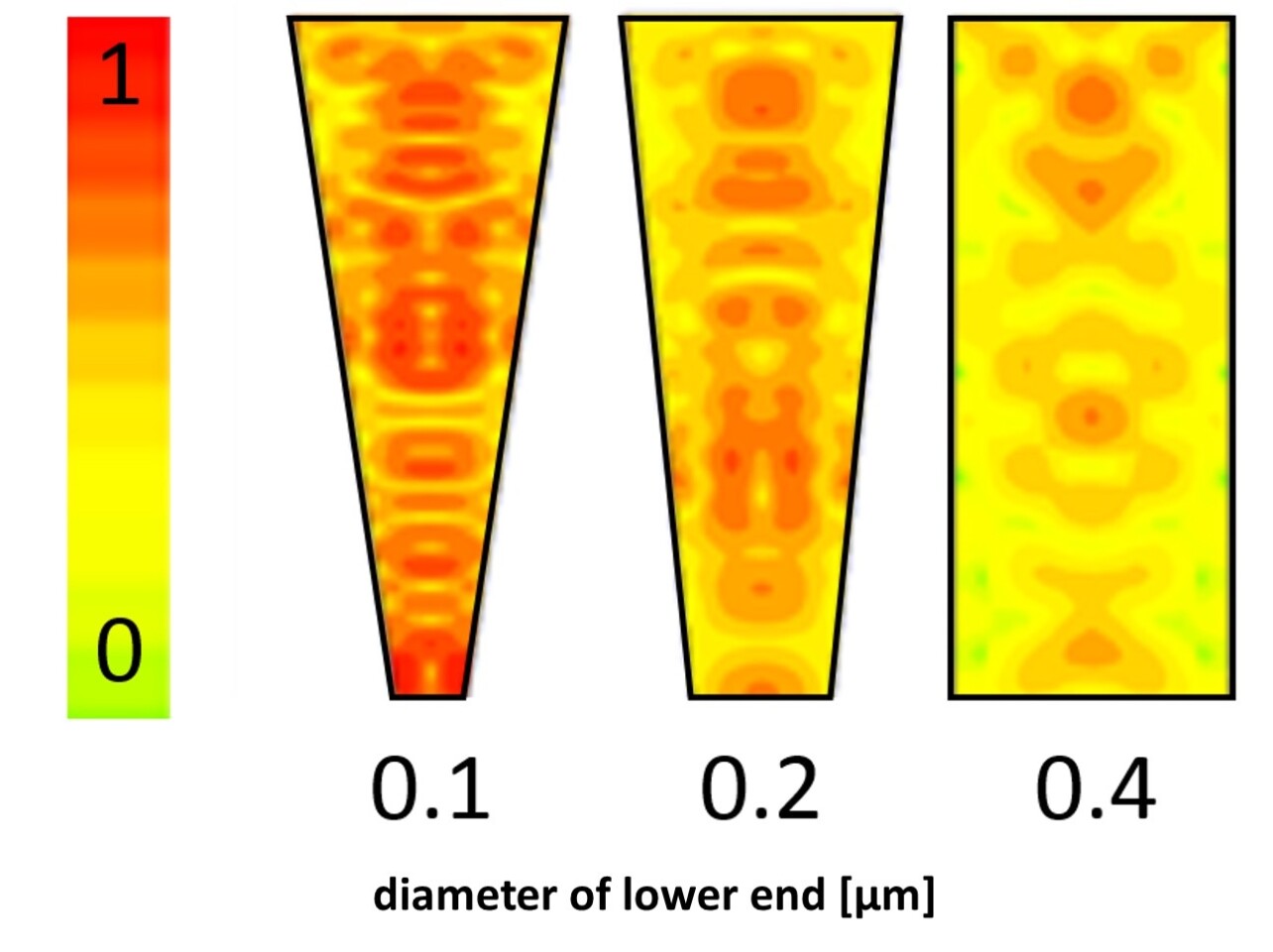Solar cells don't at first glance have any relation to a tiny structure in the eye that makes our central vision sharp, but that tiny structure – called the fovea centralis – may be the key to a huge boost in solar cell efficiency. A team of scientists at Helmholtz-Zentrum Berlin and the Max Planck Institute for the Science of Light took the underlying mechanisms that guide the fovea and adapted them to silicon as a surface for collecting light in solar cells.
The fovea centralis – so called because it is a pit in the center of the macula of the retina – contains a number of closely-packed funnel-like inverted cones that connect directly to nerve cells and provide the visual detail that allows us to read or watch TV.
The researchers noted how the cones trap large amounts of light in well-lit environments and thought to try the same approach in collecting and conducting light for photovoltaics. The experiment worked: their silicon version of the fovea increased light absorption by around 65 percent in a thin-film solar cell, compared with a conventional silicon film. Power conversion efficiencies saw a similar improvement, at 60 percent higher than in optimized nanowire arrays of the same thickness.

The extent of this boost came as a surprise to the team, who determined that the new method is also superior to the emerging technique of deploying a carpet of nanowires because the nanowires lose efficiency as they get closer together whereas the funnels' absorption improves when packed tightly.
Better yet, the funnels require no special engineering to produce. The researchers developed their micron-sized funnels by conventional semiconductor processes, packing them shoulder-to-shoulder in a silicon substrate – each around 800 nanometers wide at the top and 100 nanometers wide at the bottom.
Lead researcher Silke Christiansen says her team is working to further improve thin-film solar cells and in particular to find a way to scale their design economically to work with large-area solar cells. Fellow team member Sebastian Schmitt is also looking to adapt the funnel design for use in LEDs and sensor components, the early pilot studies of which Christiansen says are yielding promising results.
A paper describing the research was published in the journal Nature Scientific Reports.
Source: Helmholtz Zentrum Berlin


